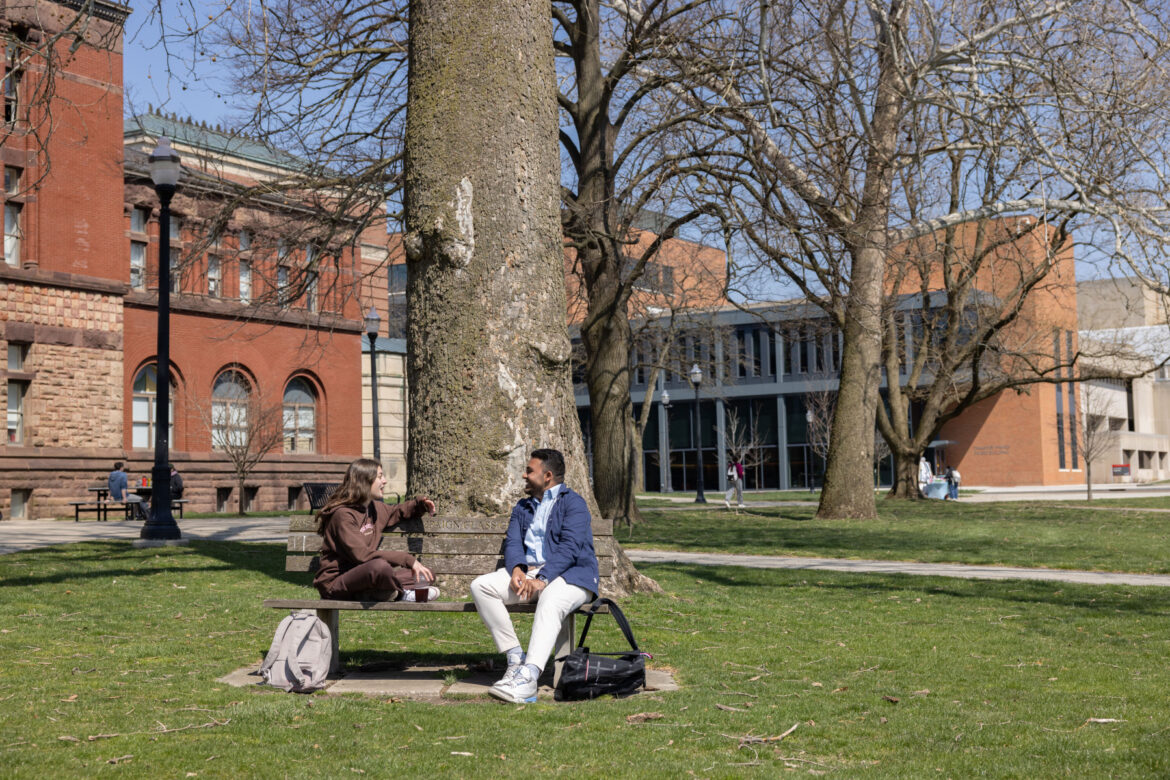When Aaron Rumbaugh was a student studying landscape architecture at The Ohio State University, his work, and his classmates’, would be critiqued by Steve Volkmann, who served as the university’s landscape architect for more than 20 years.
In 2023, Volkmann retired and Rumbaugh became the new university landscape architect. It was a full circle moment, he said.
“That’s really cool, isn’t it? I see students every day and I see myself in them.”
It’s easy to assume that a landscape architect only works with plants, Rumbaugh said.
“I think people have a misconception that landscape architects go mow lawns,” he said. “Really, I work closely with the university architect, Ben Niebauer. We help set the aesthetic and design vision for the university.”
Rumbaugh’s job, then, covers anything outside a building once it’s complete.
“My position has a role in making sure that we’re thinking about outside spaces for students,” he said. “We’re creating high-quality spaces that students can occupy and interact and engage with.”
In addition to aesthetics, wear and tear is another concern of Rumbaugh’s.
“We want the quality to be up to university quality,” he said. “It needs to withstand the weathering that happens on university grounds. That’s different from other places, as you can imagine, because of the students coming through daily.”
One of Rumbaugh’s current projects can be found on the Oval. Part of the university’s planning framework, Framework 3.0, is activating the Oval, Rumbaugh said. The appeal of the space is its versatility. 
“Our goal is to consider ways that students can have a variety of experiences on a day-to-day basis,” he said.
The best way to achieve this? Furniture. While Oval-goers may be used to seeing benches and picnic tables, Rumbaugh’s plans go beyond that.
“[We have] high-top collaboration desks with bar-style seating, rocking chairs, Adirondack chairs, tables that students can move together,” he said. “You’re going to see those in small doses. We want to open that space and give people ways to interact with it. We want the Oval to be populated and active.”
Rumbaugh’s team started with rocking chairs last year. They were a success, he said. The chairs were lightweight, so students moved them to be closer together. This next phase is a continuation of the experiment.
“We want to see what students interact with. Are these items interesting or not?” he said. “That’ll give us an idea of what things we can move forward with.”
Nearby, at Mirror Lake, Rumbaugh’s team has installed hammock posts. Students have brought their own hammocks there, he said, so why not install posts for more?
While the rocking chairs were a quick hit, students seem confused by the posts and haven’t used them much yet. Rumbaugh isn’t worried, however. Trial and error is part of the process, he said.
“I think we need to just do a better job with signage,” he said. “Maybe we buy a hammock ourselves and hook it up. Hopefully, that’s successful and we can start installing the posts around campus.”
Maintaining the Oval’s adaptability is a priority for Rumbaugh. As a former student, he knows that the Oval is used for talking, walking, reading, napping and a hundred other things. Done correctly, he said, these improvements won’t change that.
“One of the things that makes the Oval the Oval is the flexibility that students have there,” he said. “That’s something we don’t want to lose.”
Ohio State was founded in 1870 and while the campus has grown and evolved over the last 155 years, there are some spaces that could use some freshening up, Rumbaugh said. The Oval plan is part of that effort.
“When you walk through a place and there’s just a bench, that can give the perception that it’s a little stale or maybe not as interactive or welcoming,” he said. “If you walk into a place and there are students everywhere and they’re sitting on tables and rocking chairs and doing things, that gives a different perception. Leaning into that, giving that view, especially to incoming and prospective students, is a goal of ours.”
‘;

